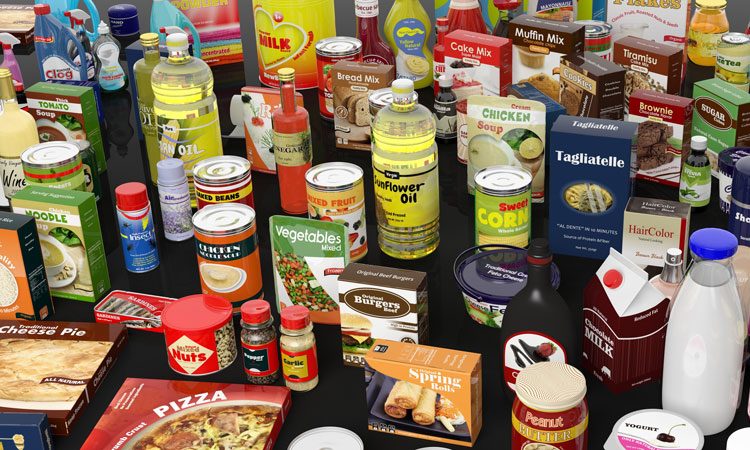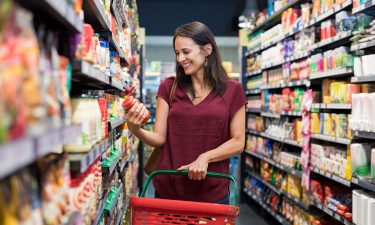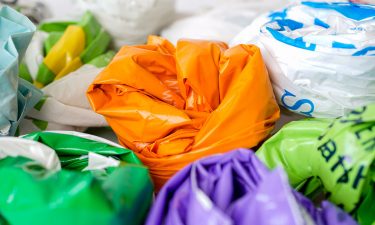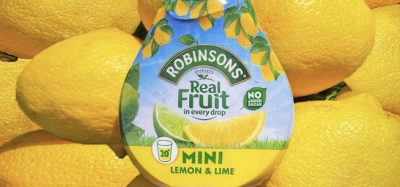Your guide to food packaging
- Like
- Digg
- Del
- Tumblr
- VKontakte
- Buffer
- Love This
- Odnoklassniki
- Meneame
- Blogger
- Amazon
- Yahoo Mail
- Gmail
- AOL
- Newsvine
- HackerNews
- Evernote
- MySpace
- Mail.ru
- Viadeo
- Line
- Comments
- Yummly
- SMS
- Viber
- Telegram
- Subscribe
- Skype
- Facebook Messenger
- Kakao
- LiveJournal
- Yammer
- Edgar
- Fintel
- Mix
- Instapaper
- Copy Link
Posted: 16 August 2019 | Debra Weiss - Technology Writer | 10 comments
In a competitive landscape like the food industry, it is important to get the packaging right. This isn’t just for practicality, but to keep a competitive edge on busy supermarket shelves. Here, Debra Weiss explains what type of packaging manufacturers should be looking for, what types should be avoided, and how best to keep ahead of the pack…


Whether it’s your favourite chocolate or those free time snacks, it is the packaging that attracts you first. Food packaging not only makes a product stands out on the shelf but it also protects them from chemical, physical and environmental factors that can contaminate them. Therefore it is important to know the right packaging types and to follow the latest packaging trends to stay competitive.
Why is food packaging so important?
Packaging preserves food quality as well as attracts customers. Most customers are likely to judge the food quality from the package. While the primary role of food packaging is to contain a portion of food, here are some other key benefits:
Protection: Packaging companies design a unique package that can be ideal for the type of food. Companies conduct a lot of research to get the best ideas for useful packages that can protect the product from chemical reactions, light, and dust. Improper food packaging affects the quality and taste of a product.
Packaged foods are free from contamination and they support the shelf life of a food product.
Transportation: There are diverse types of food packaging around us, from cans, bags, and boxes to bottles. The food products are packed in these containers so that they remain safe during transportation.


There are hundreds of products on supermarket shelves so it’s important that your brand stands out to consumers.
Influencing consumer purchasing habits: The colours and style of your food packaging play a vital role in influencing the consumer’s buying decision. After all, the brain reacts to colours in different ways, so choose your packaging colours wisely. For example, white packaging conveys simplicity and purity, making them great for dairy products. Orange packaging stands for energy and fun, making them ideal for sports drink and summer beverages. Also, match colours and flavours, like yellow for bananas and red for apple. Fonts have also an important role to play. Make sure they are readable to your target audience.
Making your brand stand out: There are hundreds of products on the shelves of supermarkets so your product should capture a customer’s attention. Packaging helps with this as it differentiates your brand from similar products on the same shelf.
Product packaging is also a great marketing tool. From the label, logo to the shape of your food’s packaging, a customer can remember your brand next time they come to store. This way, packaging builds brand recognition.
How to choose the right food packaging
Which packaging goes well with your food products? Well, there are many types to choose, from glass, paper, corrugated to plastic. However, not all food packaging is the same. All have their benefits and some downsides as well.
You need to ponder over two key points while determining the right food packaging:
- The packaging should keep your specific food product safe
- It should catch the customer’s eye.
Being a savvy business, you want your food packaging right for environment and waste management practices as well but the harsh truth is a packaging material doesn’t tick all these boxes.
After all, they vary by certain properties which are determined by:
- Material
- Design
- The type of food being packaged
- Shelf-life
- Environmental conditions
- Ease of use
- Disposal
- Cost related to production and distribution.
In other words, every food packaging material has its traits. Some certain foods are likely to interact with some packaging types. Here are some key traits of major food packaging products:
Glass:
| Pros | Cons |
| Moisture and heat resistant | Brittle and breakable |
| Non-reactive | Not easy to carry |
| Transparent (lets consumers see products) | Heavy and bulky to transport |
| Reusable/recyclable |
Aluminium:
| Pros | Cons |
| Resistant to moisture, heat, gases, and corrosion | Unable to be welded |
| Lightweight | Less strength |
| Recyclable | Limited shapes |
| Expensive |
Tinplate:
| Pros | Cons |
| Water and heat resistant | Reacts with foods |
| Durable | Requiring a can opener |
| Recyclable and easy to separate from waste (as it is magnetic) | Heavier than aluminium |
| A cheaper alternative to aluminium |
Tin-free steel:
| Pros | Cons |
| Strong and durable | Unable to be welded |
| Resistant to heat | Prone to corrosion |
| Recyclable | Requires a can opener |
| Cheaper than tinplate | Heavier than aluminium |
Paper and paperboard:
| Pros | Cons |
| Lightweight | Prone to moisture and humidity |
| Good strength | A poor barrier to light |
| Low cost | Tears or damages easily |
| Made from renewable resources | |
| Recyclable |
Polyesters:
| Pros | Cons |
| Strong | May pose an environmental threat in debris |
| Ideal for hot filling | |
| Excellent barrier characteristics | |
| High clarity | |
| Shatter and tear-resistant | |
| Easy to recycle in rigid form |
And if you use plastic packaging…
Plastic is ubiquitous. They are the lifeline of food packaging, despite facing protests from environmentalist. Love it or hate it, it is true that no packaging is as flexible, affordable and attractive as plastic. Again, it is important to choose the right plastic packaging for your food products. Here are some types of plastic and how they go with your food products:
Polyethylene Terephthalate (PETE or PET) (Code: 1): Lightweight plastic and has great impact-resistant properties. It is safe and easy to recycle. PETE is a popular packaging option for beverages, oil, water, salad dressing, and jam/jelly.
High-Density Polyethylene (HDPE) (Code: 2): Low-risk plastic, making it useful for the packaging of milk, water, cereal, and juice.


Low-Density Polyethylene is ideal for making grocery bags but it is not recyclable so should be repurposed.
Polyvinyl Chloride or PVC (Code: 3): Used in making packaging for food wrap, bottles, oil, and OTC drugs. As it contains chlorine as its key ingredient, it is biologically and chemically resistant. However, it is not safe for cooking or heating and is generally not accepted by recycling programs.
Low-Density Polyethylene or LDPE (Code: 4): Ideal for making grocery bags, food wraps, squeezable bottles, and bread bags. It is not thicker than most resins, though it has a strong heat-resisting property. Despite being safe, it is not recyclable and can harm the environment. Therefore, it is recommended to reuse or repurpose it.
PP or Polypropylene (Code: 5): Commonly used to make the packaging of yogurt, medicines, and ketchup. Its heat-resisting property makes it safe to microwave.
Polystyrene or Styrofoam (Code: 6): Ideal for food packaging like disposable cups, bowls, take away food containers and plastic cutlery. However, it is not safe as it leaches potentially toxic chemicals when coming into contact with heat. It is also not easy to recycle and should, therefore, be repurposed and reused.
Other or O (Code 7): Either the packaging is made with polycarbonate or the bioplastic polylactide or with more than one plastic material.
The latest trends in food packaging
It is important to know the trends in food packaging as the industry is highly competitive and dynamic. You can give your product an edge by incorporating these trends into your packaging:
Minimal designs: This trend is present everywhere, from book covers to road signage. Take a break from your big typeface and cluttered designs.
Bold colours: Bold colours are in vogue in food packaging. Besides attracting the customer’s attention, they go well with the design layout. Protein bars are the finest example of this trend.
Fine print becomes big: Why not list your ingredients in big fonts? It looks good and shows your credibility to the customers.


Following food packaging trends can help manufacturers ensure they have the right branding and design for their food products.
Being creative with shape: Imagine a watermelon juice packaging in the slice of melon. If you sell herbal products like aloe-vera, why not sell it in an aloe leaf-shaped container. Got the point? Many food companies are getting creative with their packaging.
Functional packaging: Dunkin Donuts has introduced a coffee cup top that is designed to carry the sugar and cream along with some extra coffee. More organisations are incorporating this trend to let their customers carry the food with ease.
The bottom line is that every food product needs packaging to get into the market. However, it is equally important to choose the right food packaging. After all, packaging not only contains and protects your product but also builds brand recognition.
Biography
Debra Weiss is a writer at iSell Packaging and has over 25 years of experience in the technology of flexible packaging materials, machinery, measures and processes etc.
Related topics
Environment, Food Safety, Hygiene, Packaging & Labelling, Shelf life, Supermarket, The consumer








I like that you pointed out how it is important to get the packaging right in a competitive landscape like the food industry. I was at the supermarket the other day and I couldn’t help but notice the different kinds of packaging used for food items. From what I’ve heard, it seems food packaging machines are usually used in order to package most food products.
Thanks for sharing this information about packaging the food.
Hello,
I’m with a pet supplies company, and had a question regarding food safety, freshness and the packaging. We are working towards being more green, and looking at packaging food product directly in corrugated cardboard boxes. Wanted to know when compared to plastic resealable bags, what the freshness, safety would be comparitively. Launching in boxes, we’ve had a lot of blowback from customers stating would not store the food product well, not keep it fresh compared to bags. Thanks for your time!
Hi Nick, it’s a tricky one. As consumers look to buy greener brands, companies are obliged to seek out alternatives to plastics. Unfortunately, it’s not a straightforward debate – plastic is used due to its ability to keep food safe and fresher for longer. There’ll be safety considerations with moving to other materials but I’m sure a solution will be found soon. Consumers only see one side of the story and that puts a lot of pressure on food brands. If you’re keen to find out more about packaging, I suggest contacting the author directly – you should be able to find a link to the company website in her bio.
Bethan – Editor of New Food.
Thanks for the informative update regards the foods packaging blog.
thank you!
This was a very interesting article. I’d want to read more of your work.
Thank you for this article.
Thank you so much for sharing this with us really amazing I am really inspired by this. please keep sharing this with us
Thanks Debra for such marvelous article , it’s really very informative
This blog is providing valuable and unique information, I know that you take a time and effort to make a awesome article.